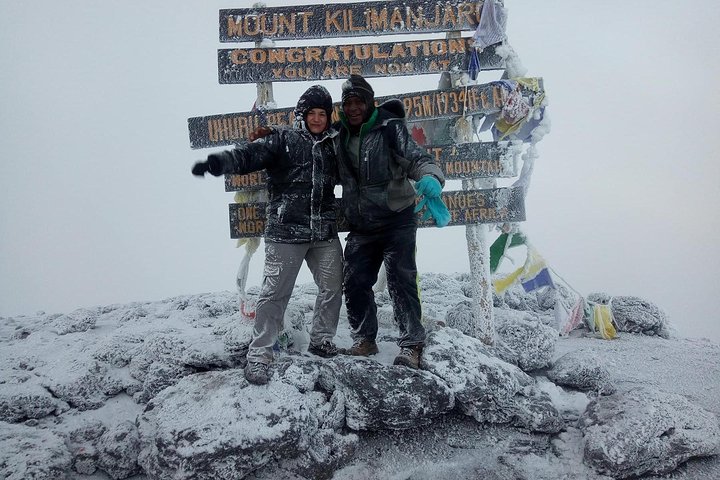
Climb Kilimanjaro via the Marangu Route: 6-Day Hut Trek to Uhuru Peak
Difficulty
challenging
Duration
6 days (daily hikes 3–8 hours; summit night 12–16 hours total)
Fitness Level
Good aerobic fitness with endurance for multiple long uphill days; previous multi‑day hiking experience recommended.
Overview
A classic 6‑day hut trek on Kilimanjaro’s Marangu Route: rainforest to alpine desert, communal huts, and a pre‑dawn summit push to Uhuru Peak. Practical logistics, essential acclimatization tips, and real expectations for the mountain’s rhythm.
Climb Kilimanjaro via the Marangu Route: 6-Day Hut Trek to Uhuru Peak
Select participants and date
You step out of the vehicle at Marangu Gate and the mountain swallows sound—rain patters on leaves, porters laugh as they heft gear, and the guide checks your paperwork under a low, cloud-heavy sky. The first trail threads into wet montane forest; moss tugs at your ankles and black-and-white colobus monkeys slip through the canopy. Over six days the route moves from dense rainforest to heath and then into an austere alpine desert, ending with the thin, wind‑scoured air of Uhuru Peak at 5,895 meters.
Adventure Photos

Adventure Tips
Hydrate relentlessly
Carry a 2–3L hydration system and sip continuously; treated water is provided but dehydration worsens altitude effects.
Layer for summit night
Temperatures plummet above Kibo — use base, insulating and waterproof layers; keep a warm hat and gloves accessible.
Pace for altitude
Walk slowly with a steady cadence (pole use helps) and heed your guide on symptoms — descending early is the safest choice if in doubt.
Footwear and grip
Sturdy waterproof boots with good ankle support are crucial for muddy rainforest sections and rocky scree above Horombo.
Local Insights
Wildlife
- Black-and-white colobus monkey
- Rock hyrax (dassie)
History
Kilimanjaro’s peaks are remnants of volcanic episodes; local Chagga communities on the southern and eastern slopes have managed coffee plantations and trade routes for centuries.
Conservation
Kilimanjaro National Park is managed by TANAPA; stay on designated trails, minimize single-use plastics, and support operators who pay fair wages and respect porter welfare.
Select participants and date
Adventure Hotspots in Moshi
Frequently Asked Questions
Recommended Gear
Waterproof trekking boots
Support and grip across muddy rainforest trails and rocky alpine scree.
Insulated down jacket
Critical for summit night and cold camps above 4,000 m.
25–40L daypack with rain cover
Carries layers, water, snacks, headlamp and summit essentials without excess bulk.
Hydration reservoir (2–3L)
Makes constant sipping easy and reduces reliance on distributed bottled water.
